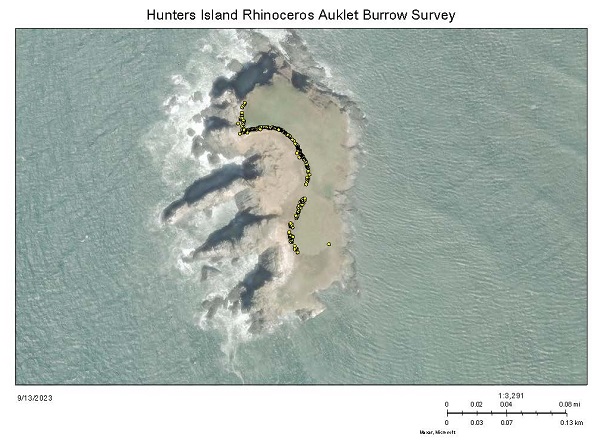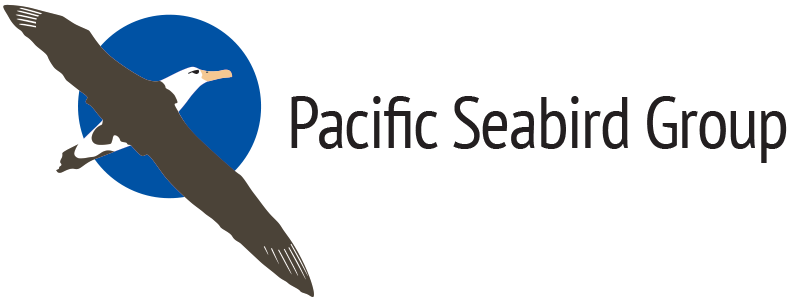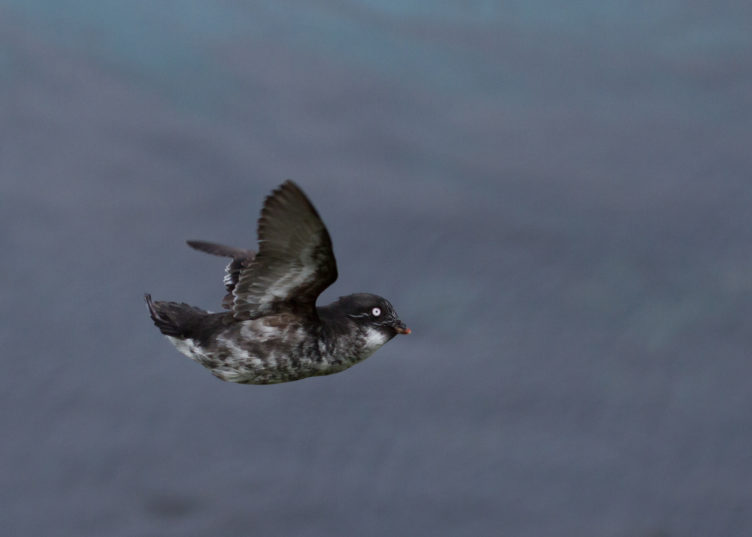Stephensen (2024)
Author Information
Shawn W. Stephensen: Oregon Coast National Wildlife Refuge Complex, U.S. Fish and Wildlife Service
Report of Seabird Related Activities to Pacific Seabird Group
Shawn W. Stephensen and Alex Cook (Oregon Coast National Wildlife Refuge Complex) conducted an aerial seabird colony survey on 28 and 29 June 2023 that included the entire Oregon coast and Castle Rock, California. The aircraft used was a Bell Jet Ranger III helicopter operated by Doug Uttecht of Northwest Helicopters (Olympia, WA). Total flight time was approximately 10 hours. All Common Murre (Uria aalge), Brandt’s Cormorant (Phalacrocorax penicillatus), Pelagic Cormorant (P. pelagicus), and Double-crested Cormorant (P. auritus) colonies were photographed using digital cameras and birds were counted on the digital images utilizing GIS computer software. Ten thousand digital images were organized and archived for future reference. Colony attendance by murres appeared to be at normal levels in comparison to previous years. Some areas of the south coast were not photographed because of fog.
Tim Halloran (USFWS volunteer) and Shawn W. Stephensen of the Oregon Coast National Wildlife Refuge Complex conducted a population status assessment of Tufted Puffin (Fratercula cirrhata) at Haystack Rock, Cannon Beach, which is within the Oregon Islands National Wildlife Refuge. The project also included a pilot study to evaluate the feasibility of monitoring additional reproductive parameters at the island, such as breeding phenology and data collection success from shore-based vantage points. The number of Tufted Puffin present at Haystack Rock was documented during 2010–2023 by conducting instantaneous counts of birds on the land, water, and in the air at 15-minute intervals. The daily mean counts were 42, 33, 13, 35, 22, 21, 23, 18, 26, 18, 15, 17, 7, and 15 birds during 2010, 2011, 2012, 2013, 2014, 2015, 2016, 2017, 2018, 2019, 2020, 2021, 2022, and 2023, respectively. Burrow occupancy was determined and the annual breeding population estimate was calculated based on the number of viable occupied burrows times two. We estimated the Tufted Puffin breeding population (individual birds) at Haystack Rock to be 127 in 2010, 115 in 2011, 92 in 2012, 143 in 2013, 125 in 2014, 121 in 2015, 124 in 2016, 109 in 2017, 127 in 2018, 127 in 2019, 98 in 2020, 98 in 2021, 74 in 2022, and 106 in 2023. The breeding phenology of Tufted Puffin at Haystack Rock was determined by bird behavior, bird abundance, and colony attendance patterns. Breeding phenology began with prospecting in early May and ended with fledging by late August. Current data suggest Haystack Rock supports the second largest puffin colony in Oregon due to declines at other sites along the coast. However, other historical Tufted Puffin nesting sites with large breeding populations have not been monitored to the extent as Haystack Rock.
Shawn W. Stephensen constructed artificial nest boxes to be used as research and management tools. The study incorporated different nest box designs that may be used by Tufted Puffin or Rhinoceros Auklet (Cerorhinca monocerata) during the breeding season. The artificial nest box consists of a nest chamber and tunnel. Multiple sizes of nest chambers were constructed, and tunnels of various materials and designs were used to test bird preference and viability. We constructed artificial nest boxes with a tunnel attached perpendicular to the nest chamber. We started with a nest box designed for Rhinoceros Auklets as described in Wilson (1986) and modified the design to accommodate the larger Tufted Puffin. Wooden nest boxes were deployed on Goat Island in May 2023. In July 2023, temperature was monitored in two boxes using a remote camera equipped with a thermocouple. The brief monitoring indicated that the interior temperature of wooden boxes could reach at least 100 degrees Fahrenheit, likely too warm for a seabird nestling. As a result of this initial investigation, we designed additional nest boxes using other materials, color, and ventilation. Ten decoys of each species (Rhinoceros Auklet and Tufted Puffin) with metal stakes were constructed by Susan Schubel at Seabird Restoration Decoy Audubon. The decoys were randomly placed near the artificial nest boxes to attract live birds to the area and encourage breeding. The metal stakes were attached to the decoys and placed in the ground or crevice to ensure secure placement.
Shawn W. Stephensen and Kylie Blake (Oregon Coast National Wildlife Refuge Complex) conducted a Rhinoceros Auklet burrow survey at Hunters Island, Oregonon September 7, 2023. We utilized EOS Arrow Gold RTK receiver that has 1-cm RTK real-time accuracy. We documented a total of 250 burrows with 13 of the burrows having two entrances and one of them being a possible Tufted Puffin burrow.







